Story Structure
What is Story Structure?
Stories contains parts. The way that these parts are arranged creates the structure of the story. These structures shape both the audiences' expectations and how the author will tell the story. When readers analyze the structure of a story, they look at the story as a mechanic might look at a car engine: readers identify the parts and see how they are working. Though not every story follows a predictable pattern, most do. This page explains conventional story structure.
Exposition
The exposition "exposes" readers to the world of the story. In the exposition, readers are introduced to the setting (time and place of the story) and some or all of the characters. The exposition ends when the conflict or problem is introduced.
Inciting Incident
The inciting incident ends the exposition. This is the moment when the conflict is introduced. A story isn't much of a story if it doesn't have a conflict; it's more of a rambling, so most stories have a conflict. When the conflict enters the narrative, the exposition ends and the rising action begins. This moment is called the inciting incident.
Rising Action
Any event that occurs after the exposition but before the climax or turning point of the story is called rising action. During the rising action, the main character or protagonist of the story may struggle with the conflict but be unable to resolve it. If the story is comedic, the rising action is often a serious of unfortunate events for the main character. If the story is tragic, the rising action is often a series of favorable circumstances for the main character; however, at the climax the momentum of the story changes.
Climax
The climax is the turning point of the story. It is a common misconception that the climax is the most exciting part of a story, but this is not always the case. Rather, the climax is the moment in the story when the momentum or feeling of the narrative shifts. The main character may change, learn a lesson, or meet an important person, and this change will prepare the main character to resolve the conflict in the story. If the story is comedic, the main character's situation will begin to improve. If the story is tragic, the main character's situation may begin to deteriorate. Identifying the climax or turning point is the first thing that you should do when identifying the structure of a story. Doing so will allow you to separate all of the events into two columns: rising action and falling action. To find the climax, look for changes in the main character that may indicate a turn in the narrative direction.
Falling Action
Falling actions are events that occur after the climax or turning point of the story. The falling action of a story is often developed in one of two ways: if the problem of the story was solved during the climax, the falling action will simply "wind-down" to the end of the story; however, if the conflict was not resolved during the climax, the falling action may have the protagonist preparing to meet or address the conflict in an impeding moment of final suspense. To put it more simply, falling action refers to any event after the climax right up until the end of the story.
Moment of Final Suspense
A moment of final suspense occurs when the protagonist, after having experienced a change during the climax, meets or addresses the conflict. This is the last part in the story when there is tension, as the resolution of the story depends on the outcome of the moment. Not every story has a moment of final suspense, but many stories do.
Resolution or Denouement
The terms resolution and denouement refer to how the story ends. If the story had a moment of final suspense, the resolution will include all of the events that follow. If the conflict of the story was resolved during the climax, the term resolution may just refer to the final moments of the story.
Story Structure Lesson:
Example of Conventional Story Structure:
Story Structure Worksheets and Activities
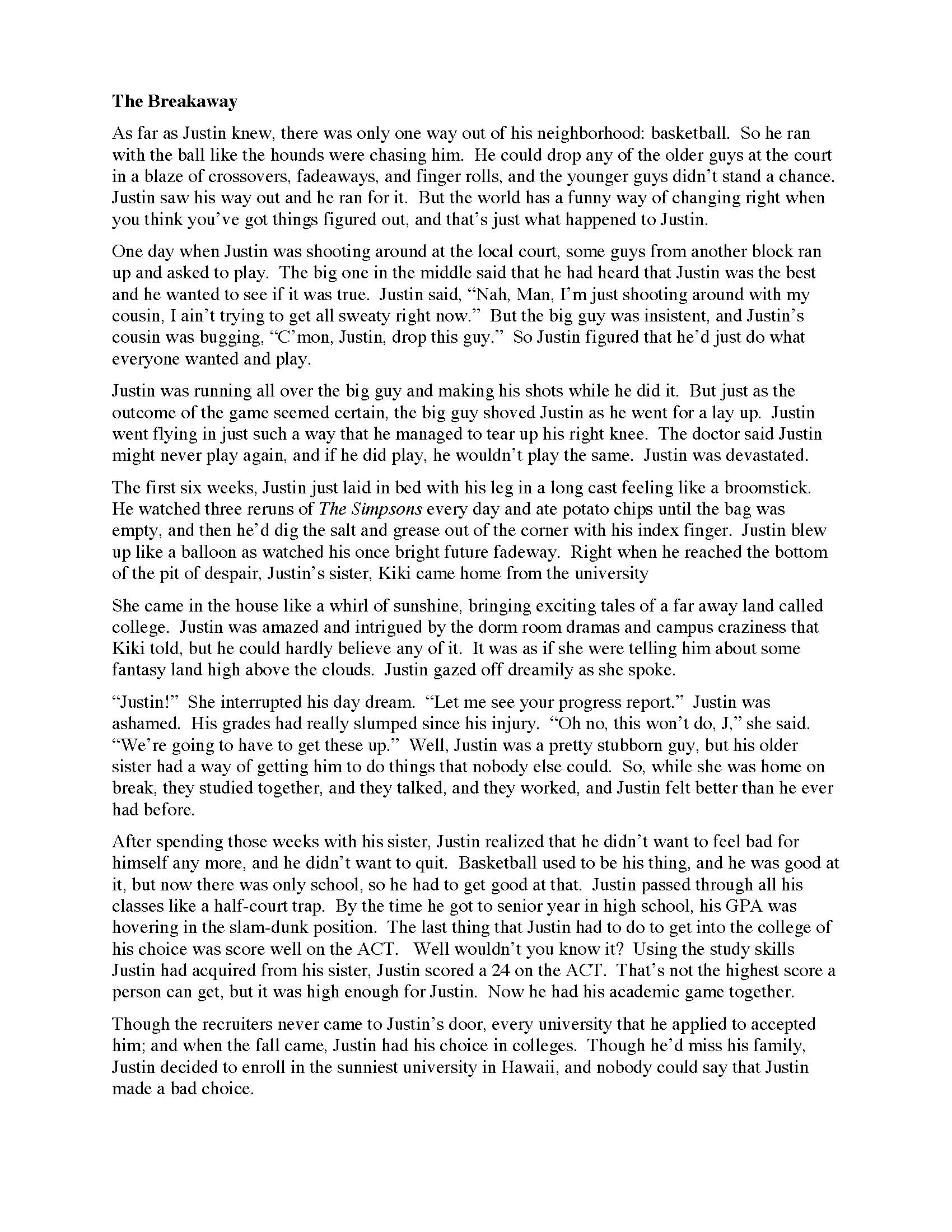
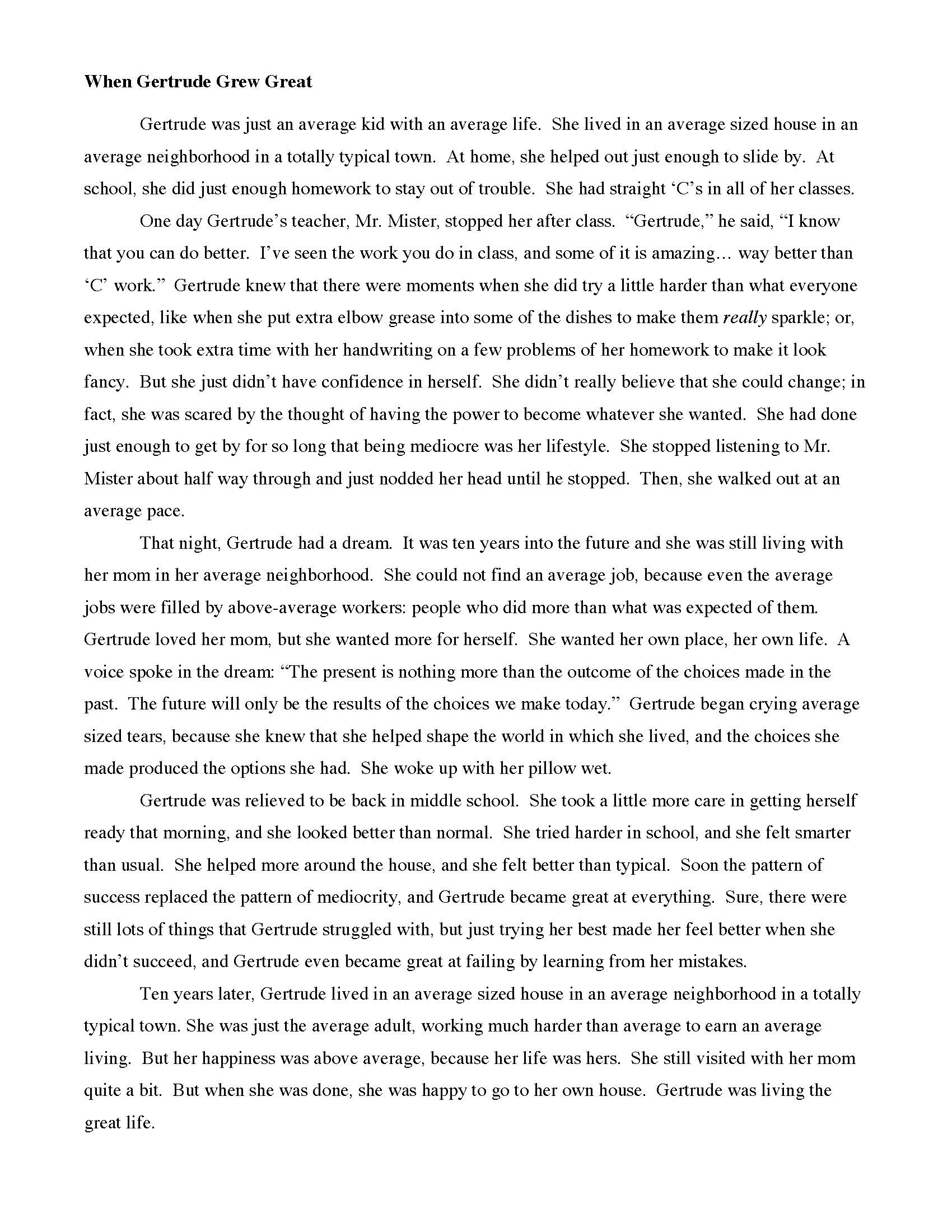

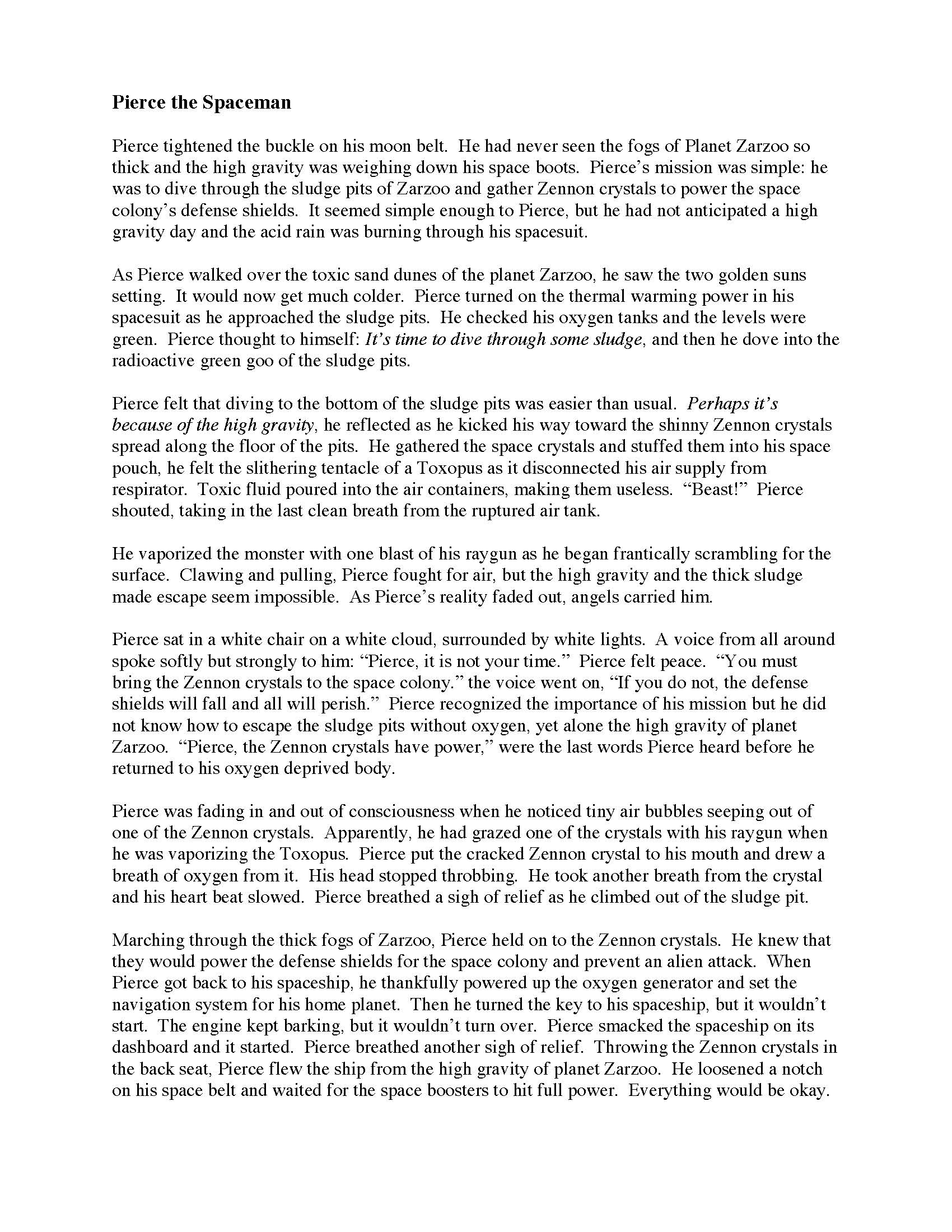
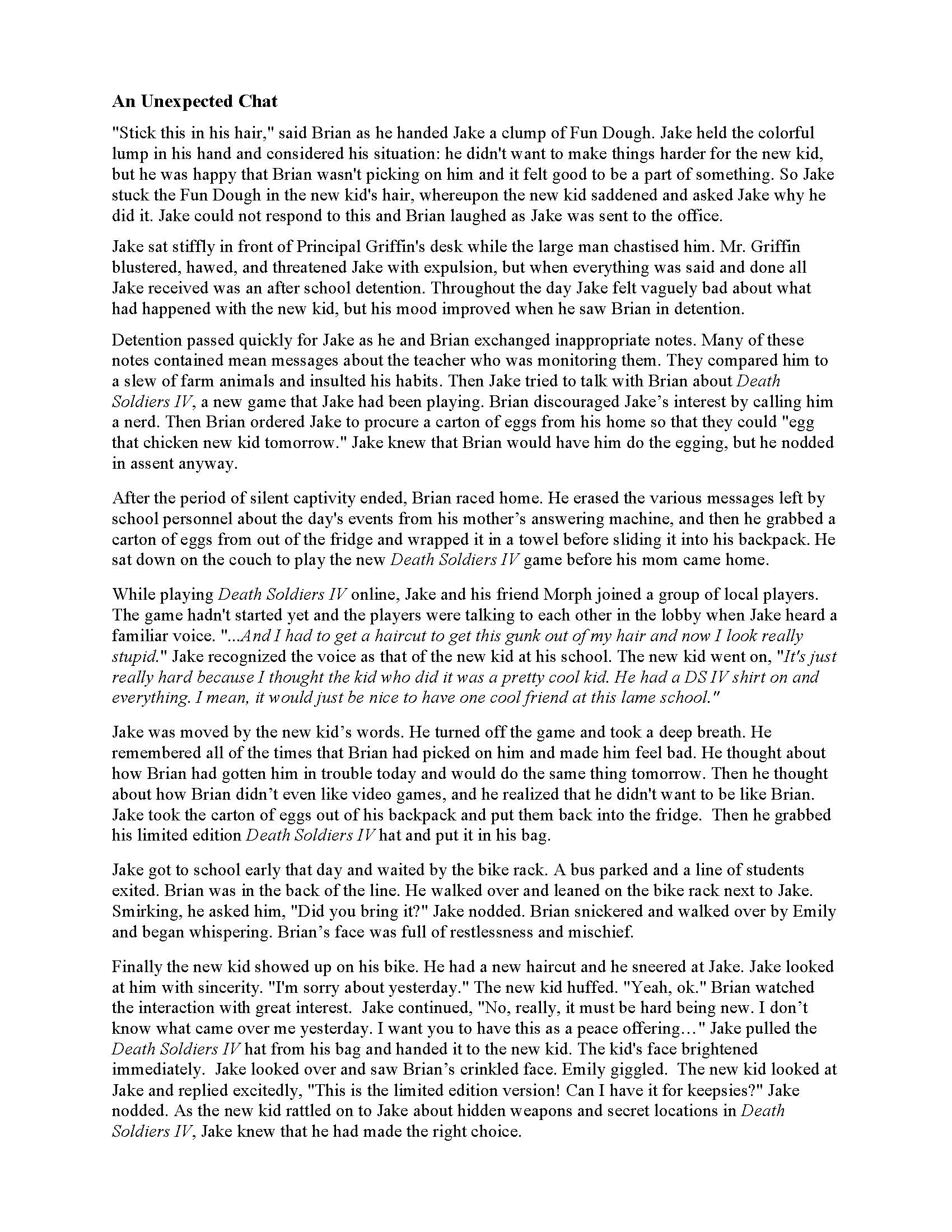
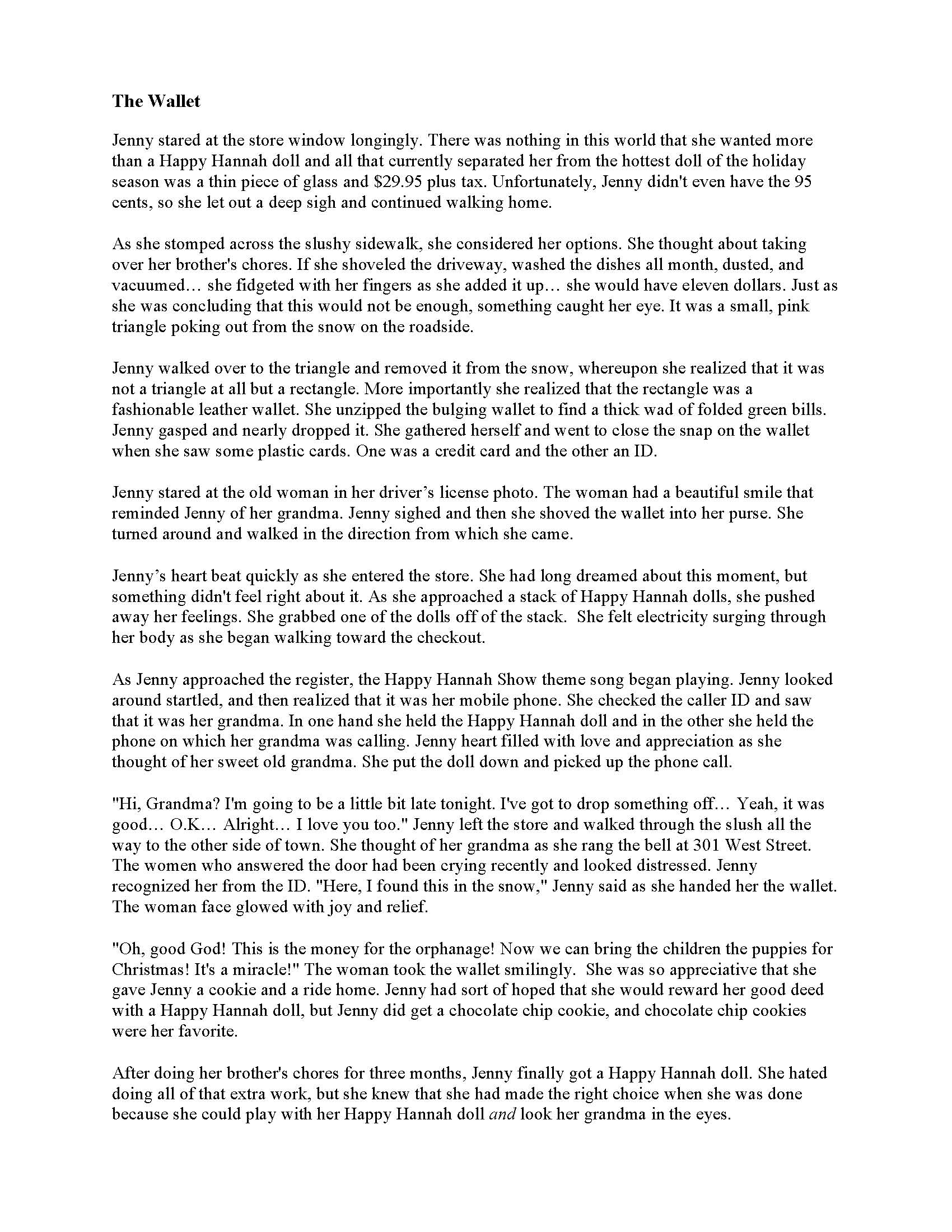
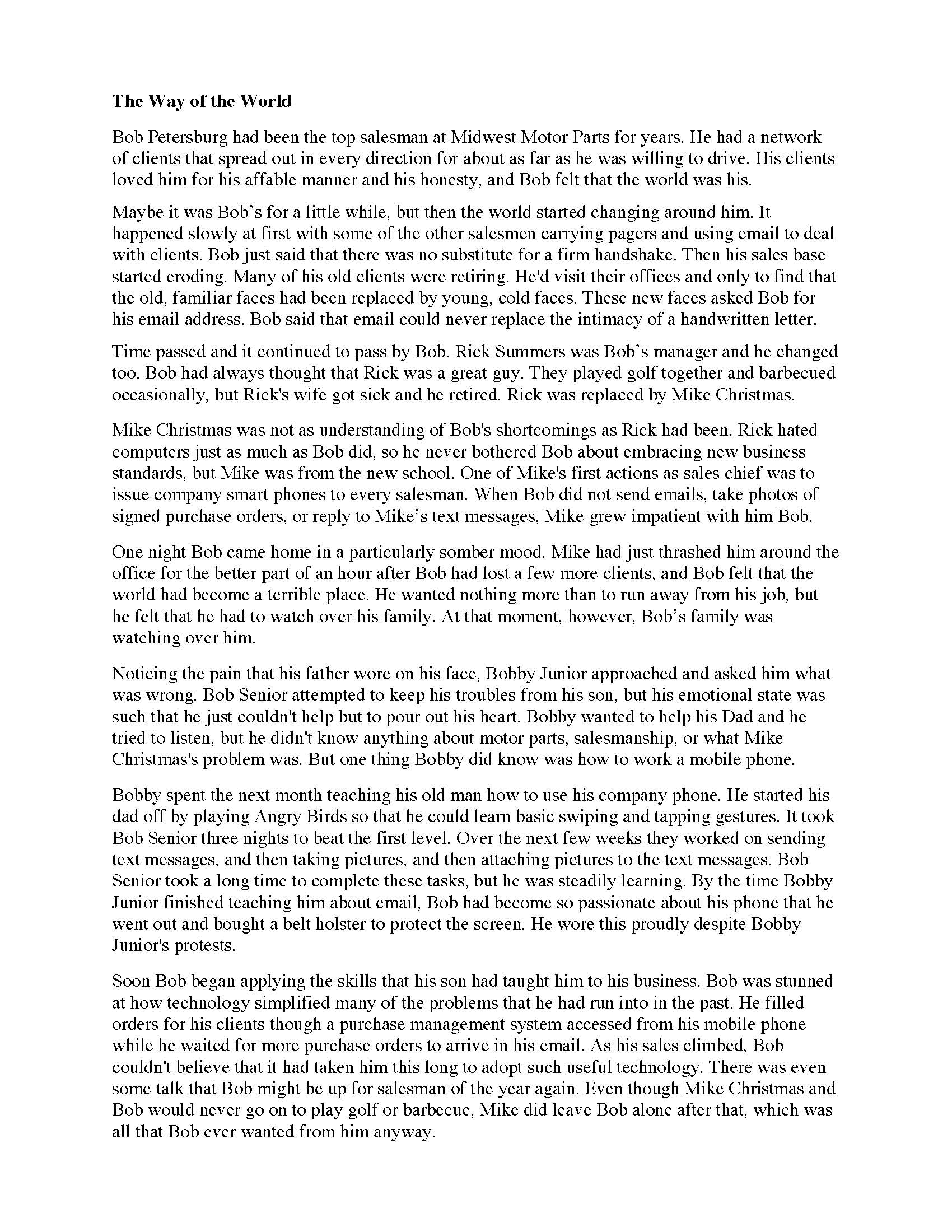
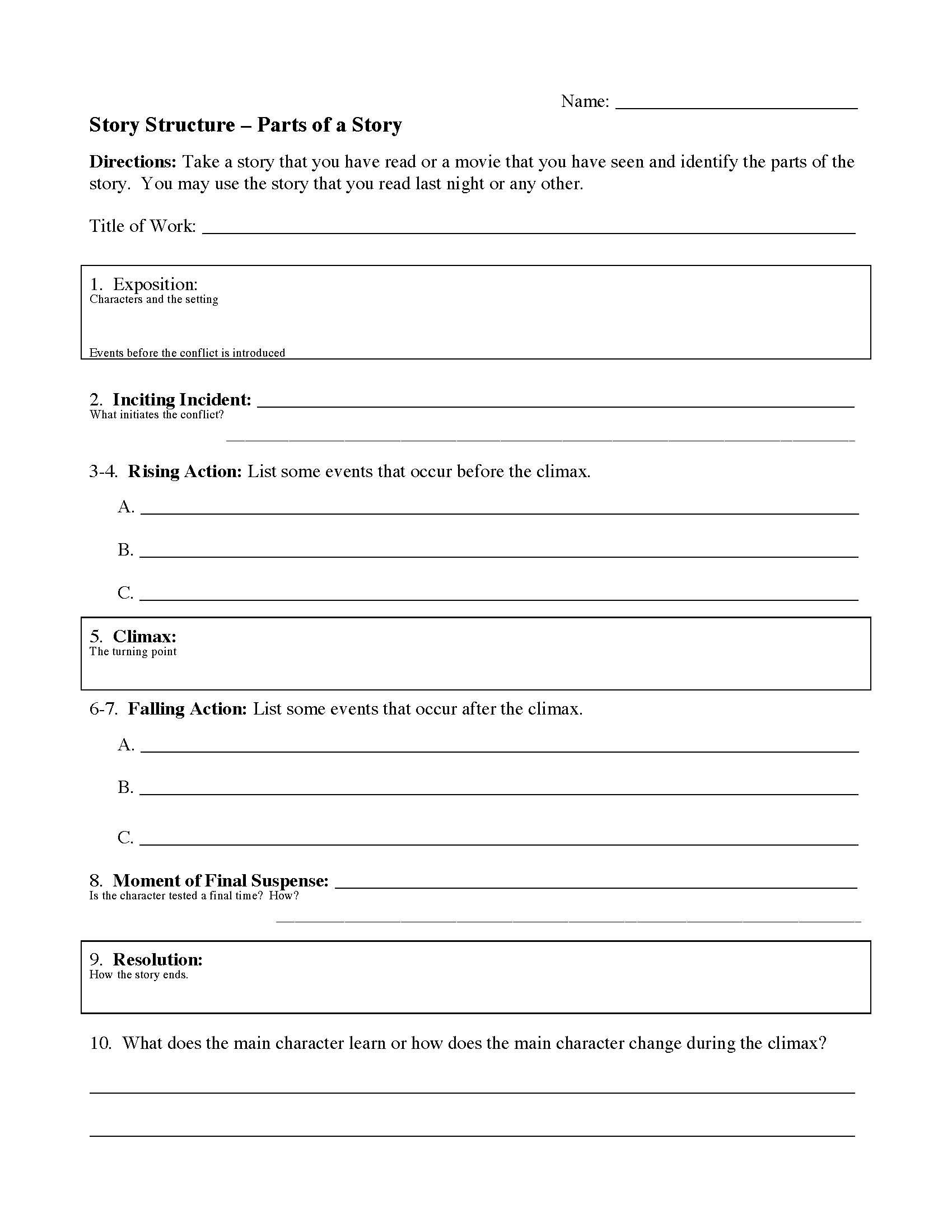


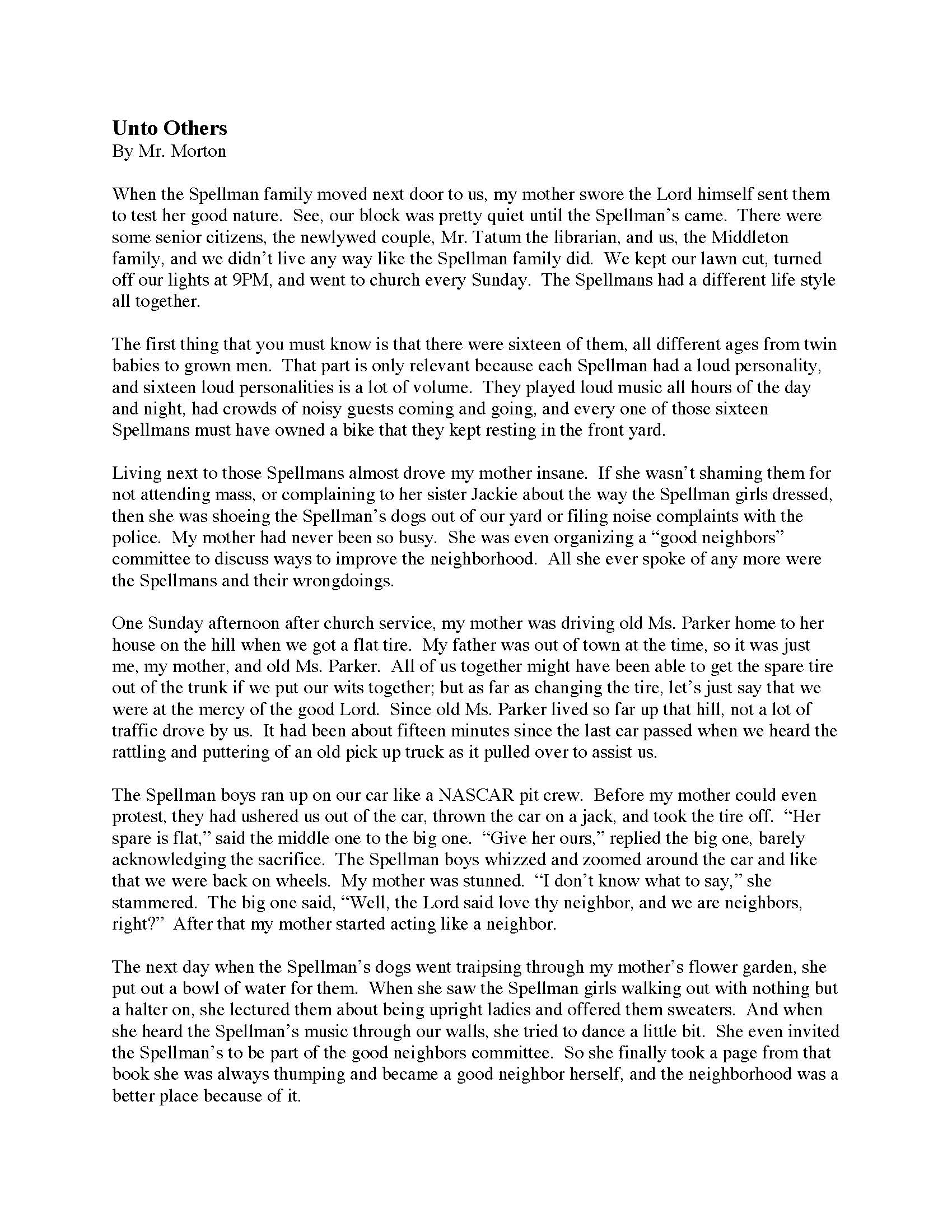
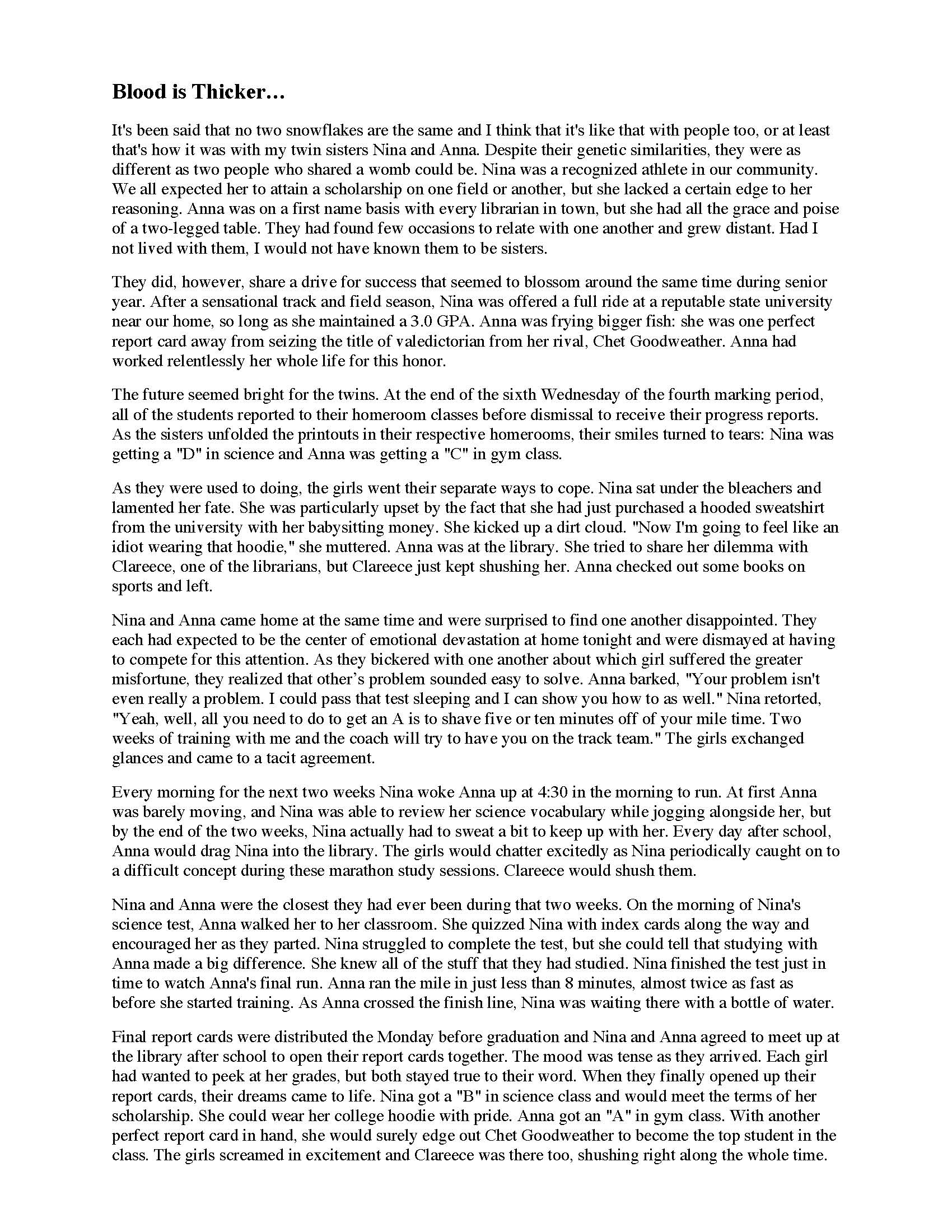
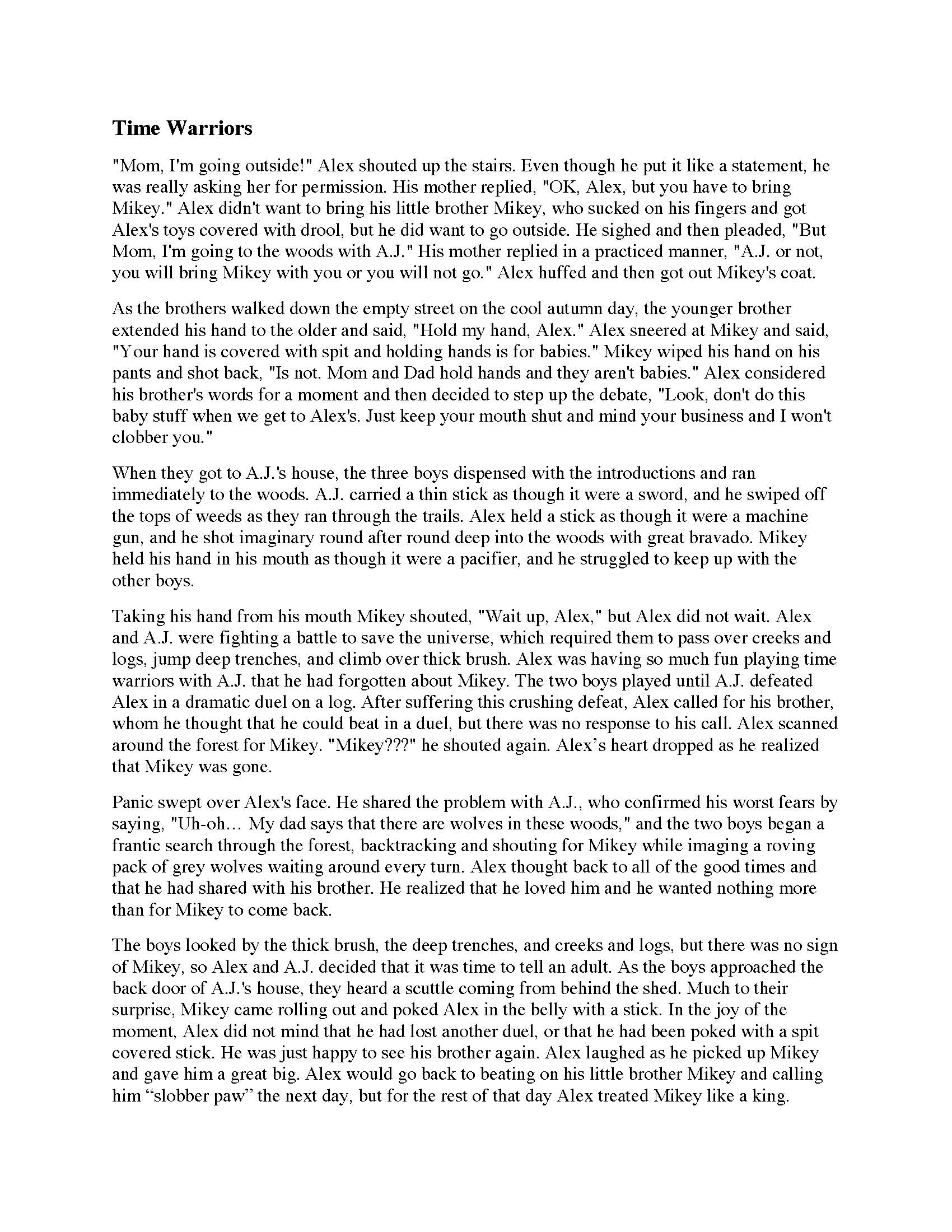
Story Structure
Common Core State Standards
RL.2.5 - Describe the overall structure of a story, including describing how the beginning introduces the story and the ending concludes the action.
RL.3.5 - Refer to parts of stories, dramas, and poems when writing or speaking about a text, using terms such as chapter, scene, and stanza; describe how each successive part builds on earlier sections.
RL.4.5 - Explain major differences between poems, drama, and prose, and refer to the structural elements of poems (e.g., verse, rhythm, meter) and drama (e.g., casts of characters, settings, descriptions, dialogue, stage directions) when writing or speaking about a text.
RL.5.5 - Explain how a series of chapters, scenes, or stanzas fits together to provide the overall structure of a particular story, drama, or poem.
RL.6.5 - Analyze how a particular sentence, chapter, scene, or stanza fits into the overall structure of a text and contributes to the development of the theme, setting, or plot.
RL.7.5 - Analyze how a drama’s or poem’s form or structure (e.g., soliloquy, sonnet) contributes to its meaning.
RL.8.5 - Compare and contrast the structure of two or more texts and analyze how the differing structure of each text contributes to its meaning and style.
RL.9-10.5 - Analyze how an author’s choices concerning how to structure a text, order events within it (e.g., parallel plots), and manipulate time (e.g., pacing, flashbacks) create such effects as mystery, tension, or surprise.
RL.11-12.5 - Analyze how an author’s choices concerning how to structure specific parts of a text (e.g., the choice of where to begin or end a story, the choice to provide a comedic or tragic resolution) contribute to its overall structure and meaning as well as its aesthetic impact.
Search here.
3 Comments
Leave a Reply
- Author's Purpose Worksheets
- Characterization Worksheets
- Conflict Worksheets
- Fact and Opinion Worksheets
- Figurative Language Activities
- Figurative Language Poems with Questions
- Genre Activities
- Irony Worksheets
- Making Predictions
- Mood Worksheets
- Nonfiction Passages and Functional Texts
- Parts of Speech Worksheets
- Poetic Devices
- Point of View Worksheets
- School Project Ideas
- Setting Worksheets
- Simile and Metaphor Worksheets
- Story Structure Worksheets
- Text Structure Worksheets
- Theme Worksheets
- Tone Worksheets
- ALL PAGES AND WORKSHEETS




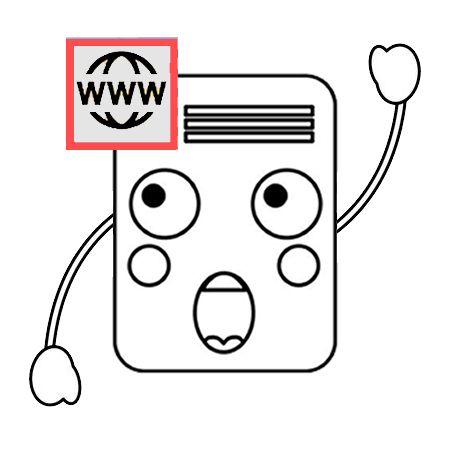


Rachel
/ February 21, 2017This is very helpful. My teacher told me to try it out and i loved it so much. After looking at this I got all my work done. Thank you so much for making this.
Ash
/ January 9, 2016This is a wonderful material to study for an English final in high school.
Mary
/ August 5, 2013This is excellent material for a person to learn how to study story structure.